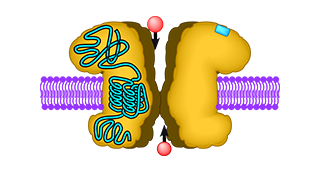Publication of the Year 2014
M.I.K. Hamad, A. Jack, O. Klatt, M. Lorkowski, T. Strasdeit, S. Kott, C. Sager, M. Hollmann, and P. Wahle (2014).
Type I TARPs promote dendritic growth of early postnatal neocortical pyramidal cells in organotypic cultures.
Development 141: 1737-1748.
doi: 10.1242/dev.099697
Abstract
Glutamate receptors of the AMPA (α-amino-3-hydroxy-5-methyl-4-isoxazole propionate) subtype have been shown to be involved in the establishment of the adult branching pattern and spine architecture of dendritic trees of neocortical neurons. TARPs (transmembrane AMPA receptor regulatory proteins) are accessory proteins of AMPA receptors that modulate receptor transport as well as the biophysical properties of AMPA receptors. This prompted us to study whether gene gun-mediated TARP overexpression in organotypic cultures can be used to indirectly modulate the dendritic architecture of neocortical neurons, via modulation of AMPARs. Indeed, we could show that in early development (5–10 days in vitro) the type-I TARP γ8 promotes dendritic growth, while later in development (10–15 days in vitro) the three type-I TARPs γ2, γ3, and γ8 serve the same purpose. Interestingly, the fourth type-I TARP, γ4, had the opposite effect and reduced dendritic growth. The effect was cell type-specific (only pyramidal neurons were affected), restricted to apical dendrites, and could not be mimicked by type-II TARPs such as γ5, γ6, and γ7.



